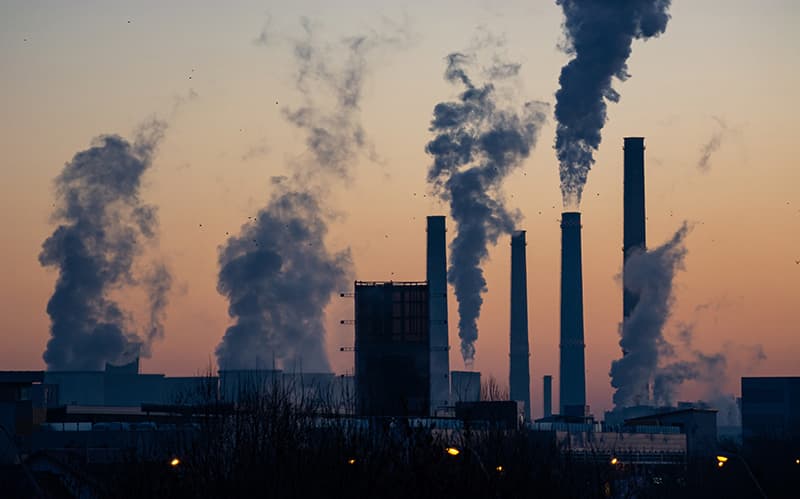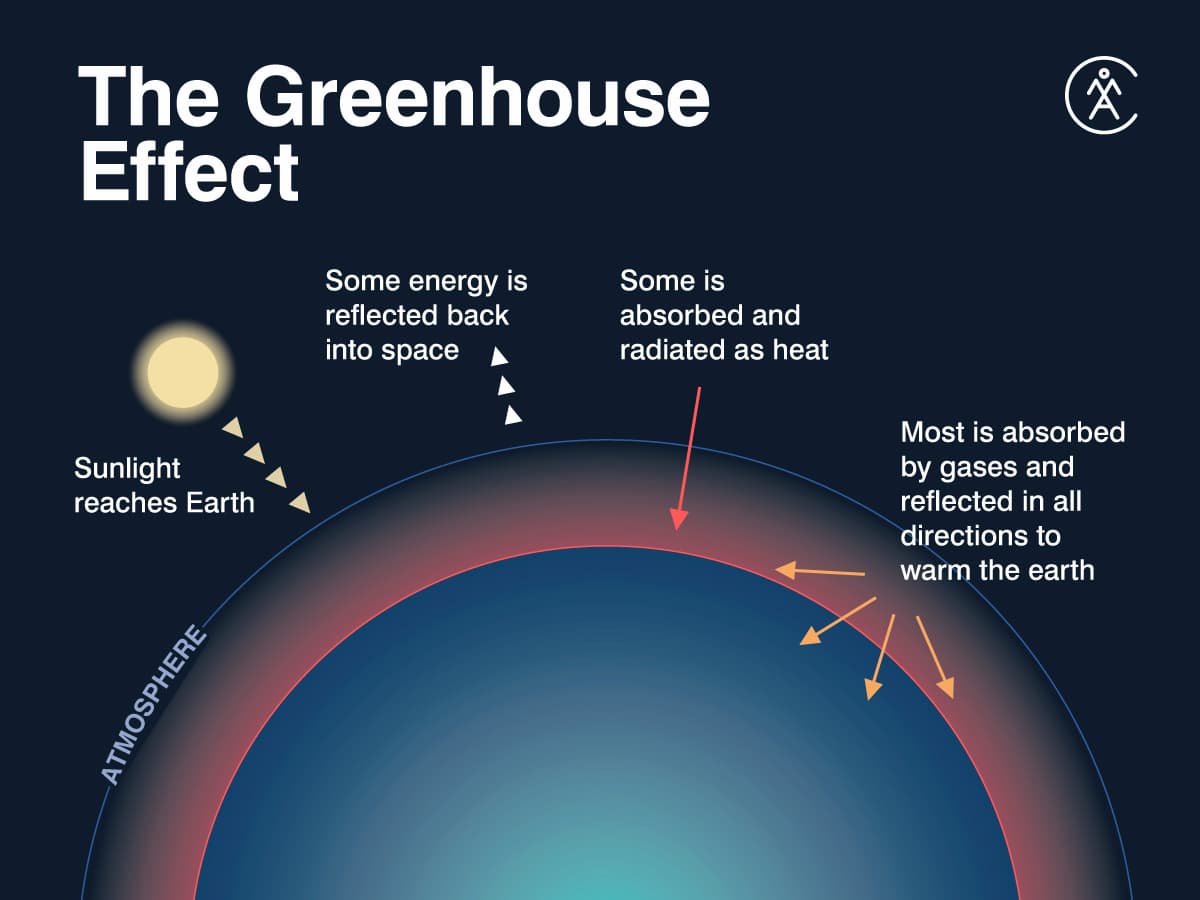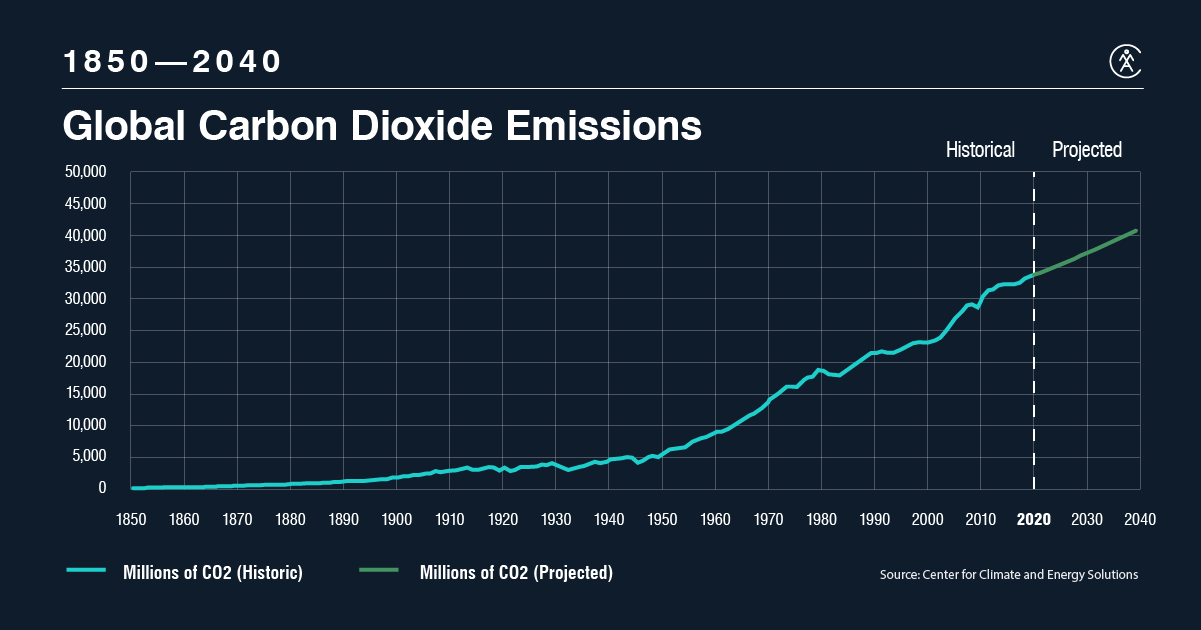The Causes of Climate Change

Nearly all scientists agree: the global climate is getting warmer. According to NASA records, Earth’s average surface temperature has risen 1.62 degrees Fahrenheit since the late 19th century. All but one of the 16 hottest years in NASA’s 134-year record have occurred since 2000. The Intergovernmental Panel on Climate Change (IPCC), which includes more than 1,300 scientists from the United States and other countries, forecasts a temperature rise of 2.5 to 10 degrees Fahrenheit over the next century. The climate is clearly warming; but just how is that happening?
The Greenhouse Effect
Earth is a greenhouse. When the sun’s rays reach Earth, some of that heat is absorbed, and other heat is, ideally, reflected back through the atmosphere and into space. But today, a layer of naturally occurring and human-created pollutants and gases near the top of Earth’s atmosphere—built up over many, many years—now traps much of the sun’s heat, similar to a greenhouse.

Greenhouse Gases
The main gases that contribute to the greenhouse, trapping the sun’s heat and warming the global climate, are carbon dioxide, methane, nitrous oxide, fluorinated gases, and water vapor. These gases differ from each other in how long they stay in the atmosphere (from just a few years to millennia) and in how effective they are at storing heat. Some of these gases are naturally occurring, while human activities—especially burning fossil fuels and certain agricultural practices—contribute to greenhouse gas emissions.

Carbon dioxide (CO2)
- Accounted for 81% of U.S. greenhouse gases in 2018
- Natural sources: the natural circulation of carbon among the atmosphere, oceans, soil, plants, and animals – including human and animal respiration.


Methane (CH4)
- Accounted for 10% of U.S. greenhouse gases in 2018
- Natural sources (35 to 50% of all methane emissions): wetlands, termites, sediments, volcanoes, and wildfires.
- Human sources (50 to 65% of all methane emissions): natural gas and petroleum systems (28%), landfills (17%), agriculture systems/manure management (10%), coal mining (8%).
- Trend since 1990: decreased by 18.1%
Nitrous oxide (N20)
- Accounted for 5% of U.S. greenhouse gases in 2018
- Natural sources (60%): the natural circulation of nitrogen among the atmosphere, plants, animals, and microorganisms that live in soil and water.
- Human sources (40%): agriculture soil management (78%), fuel combustion (7%), industrial chemical production (6%), manure management, transportation, and waste.
- Trend since 1990: flat (nitrous oxide emissions from mobile combustion decreased 63.7% since 1990 because of emission control standards)
Fluorinated gases:
- The most potent and longest-lasting GHGs emitted by humans.
- Accounted for 5% of U.S. greenhouse gases in 2018
- Natural sources (0%): none
- Human sources (100%): chlorine- and fluorine-containing solvents and refrigerants introduced since the mid-20th century as replacements for ozone-depleting chemicals (92%); Industry (7%); transmission and distribution of electricity (2%)
- Trend since 1990: up 84%
Water vapor (H2O)
Water vapor, which is what makes up clouds and fog, also contributes to the greenhouse effect, increasing as the global climate rises.
Why does it matter?
An increase in the global mean temperature will continue to alter the natural landscape and daily human lives across the planet through:
- Higher average temperatures
- Greater precipitation
- Stronger storms and hurricanes
- More droughts and heat waves
- Disproportionate consequences for the world’s poor
- Sea level rise of 1 to 8 feet by 2100
- Ice-free Arctic region
Sources: National Oceanic and Atmospheric Administration, Center for Climate and Energy Solutions, NASA, Environmental Protection Agency, NRDC




